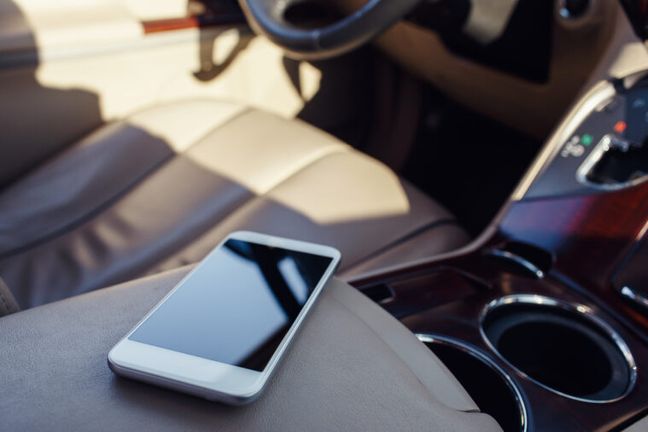Distracted driving caused by cell phones happens every day. When a car accident occurs and a cell phone is anywhere in the vicinity, allegations will no doubt abound that the at-fault driver had his mind on something more captivating than the road. However, in court, what constitutes evidence that cell phone use caused an automobile accident is still evolving. When multiple causes may have contributed to a car accident, attorneys should be cognizant of the possibility courts will deny summary judgment when questions remain about what degree a potential cause—such as cell phone use—contributed to the accident. In particular, this case illustrates how an allegation of cell phone usage near the time of a car accident cannot negate a municipality’s duty to maintain reasonably safe roadways.
Facts
Wesley Evans died after the car he was driving struck a slowly moving train at a railroad crossing in Tacoma, Washington.[i] His family filed a wrongful death suit alleging Tacoma did not maintain safe road conditions and warnings at the railroad crossing.[ii] The only signage at the intersection consisted of a sign in the shape of an “X” with a yield sign underneath and then “‘2 TRACKS’ appeared underneath the yield sign.”[iii] The train cars were all empty and marked with yellow reflective tape.[iv]
Mr. Evans struck the train cars at a coupler as he was leaving work as a longshoreman at approximately 3:00 a.m.[v] The collision caused extensive damage to Mr. Evans’s car and caused the two train cars to disconnect where he struck them.[vi] When EMTs arrived at the scene, they discovered the cellphone of Mr. Evans lying face down on his thigh “with his hand still on top of the phone almost holding it”[vii] with the game Pokémon Go actively running.[viii] Based on video footage of the accident, an officer estimated Mr. Evans’ speed was 42 miles per hour at the time of the collision.[ix]
Trial Court’s Ruling
The estate of Mr. Evans commenced a wrongful death lawsuit alleging the City of Tacoma did not maintain road conditions safe for ordinary travel.[x] Tacoma moved for summary judgment dismissal of the case and submitted sworn testimony from the EMT who discovered Mr. Evans’ cell phone, the witnesses who called 911, and Tacoma Rail employees in support of its motion.
Arguing against Tacoma’s motion, the estate submitted declarations from 21 longshoremen detailing the dangerous road conditions at the railroad crossing. In addition, the estate submitted testimony from a “human factors” expert as well as information about other accidents at the intersection obtained through a public records request. The plaintiff and defendant presented competing evidence as to whether Pokémon Go could have been played prior to the collision. The trial court ruled in favor of Tacoma on grounds it did not proximately cause the accident because the only reasonable inference that could be drawn from the evidence was that Mr. Evans was distracted at the time of collision.[xi]
Analysis on Appeal
The Washington State Court of Appeals focused on the legal, or proximate, cause of the accident. The court noted there can be more than one legal cause behind an accident.[xii] The court further considered the doctrine of comparative fault which allows for injured parties to recover compensation in tort lawsuits after reducing their recovery in proportion to their amount of fault.[xiii]
Bringing those legal principles to bear in this case, the Court of Appeals re-analyzed the facts drawing all reasonable inferences in the light most favorable to the plaintiff estate. The court concluded there exist considerable issues of fact as to whether Mr. Evans collided with the train because he could not see it.[xiv] Notably, the court considered that the video of the accident showed Mr. Evans swerving just before the impact and determined that his swerving created an issue of fact as to whether Mr. Evans crashed because of poor signage.
As to whether Mr. Evans was distracted by Pokémon Go, the court noted neither the estate nor the city presented evidence showing when Mr. Evans last played the game on his phone.[xv] The combination of these unresolved questions led the court to conclude the trial court erred in granting summary judgment, as there exist material issues of fact that a jury will need to resolve.[xvi]
Takeaways
While the case currently remains unpublished, and therefore cannot be cited as controlling case law, there are useful insights that can be obtained. First, because cell phones are so ubiquitous in our world today, any litigant alleging cell phone use caused an accident should invest in a forensic expert who can determine when a cell phone was most recently used (and even which application, as was important here). It is also beneficial for attorneys representing municipalities to understand the duty to ensure safe cities and roads cannot be completely set aside through the negligent acts of citizens or pedestrians.
Given that maintaining safe roadways for ordinary travel is a perennial duty of cities, municipalities should consider taking proactive steps to ensure road safety. For example, cities should consider lighting all railroad crossings or consider using other more conspicuous warning mechanisms for those railway intersections such as flashing warning lights to indicate train activity.
Keep Reading
More by this author
Sources
[i] Evans v. City of Tacoma, No. 57218-4-II, 2023 (Wash. Ct. App. Apr. 18, 2023); WL 2984789, at *1
[ii] Id.
[iii] Id.
[iv] Id.
[v] Id.
[vi] Id. at *2.
[vii] Id.
[viii] Id.
[ix] Id.
[x] Id. at *1.
[xi] Id. at 9.
[xii] N.L. v. Bethel Sch. Dist., 186 Wn.2d 422, 437, 378 P.3d 162 (2016) (quoting Hartley v. State, 103 Wn.2d 768, 778, 698 P.2d 77 (1985)).
[xiii] RCW 4.22.005.
[xiv] Evans, No. 57218-4-II, 2023 WL 2984789, at *5.
[xv] Id.
[xvi] Id.

 Author: Judson D. Taylor
Author: Judson D. Taylor
 Editor: Ashley Paige Fetyko
Editor: Ashley Paige Fetyko
 Cannabis Workers Allege Quota to Trim 4 Pounds a Day Violates the California Labor Code
Cannabis Workers Allege Quota to Trim 4 Pounds a Day Violates the California Labor Code
 The Ninth Circuit Reminds Us: Every Word Matters
The Ninth Circuit Reminds Us: Every Word Matters
 NO WAY, PRO SE! The Consequences of Abusing the Judicial System as a Pro Se Litigant in Colorado
NO WAY, PRO SE! The Consequences of Abusing the Judicial System as a Pro Se Litigant in Colorado
 Victim of Financial Mismanagement or Unlawful Retaliation? New Jersey City University Program Founder Claims School Retaliated After Reporting Alleged Sexual Harassment
Victim of Financial Mismanagement or Unlawful Retaliation? New Jersey City University Program Founder Claims School Retaliated After Reporting Alleged Sexual Harassment
 “Real Housewives” Gets a Reality Check
“Real Housewives” Gets a Reality Check
 Missing a Chapter: Insufficiency of Expert Deposition Testimony in Medical Malpractice Litigation
Missing a Chapter: Insufficiency of Expert Deposition Testimony in Medical Malpractice Litigation
 Crash Course: Why Summary Judgment Misses the Mark in Illinois Multi-Cause Limousine Crash Collision
Crash Course: Why Summary Judgment Misses the Mark in Illinois Multi-Cause Limousine Crash Collision
 Bitter Truths: Lead, Cadmium, and Defective Pleadings in California Chocolate Class Action
Bitter Truths: Lead, Cadmium, and Defective Pleadings in California Chocolate Class Action
 The Law of Unintended Consequences: Including Insurance Brokers in Litigation Strategy Communication May Waive the Attorney-Client Privilege
The Law of Unintended Consequences: Including Insurance Brokers in Litigation Strategy Communication May Waive the Attorney-Client Privilege
 Nothing to Sneeze At: Employee Remote Work Requests May Get More Complicated – and Fast
Nothing to Sneeze At: Employee Remote Work Requests May Get More Complicated – and Fast
 Casino Vaccine, No Problem? Nevada Court to Decide
Casino Vaccine, No Problem? Nevada Court to Decide
 Washington State Land Owners May be Liable for Dangerous Conditions That They Chould Anticipate
Washington State Land Owners May be Liable for Dangerous Conditions That They Chould Anticipate